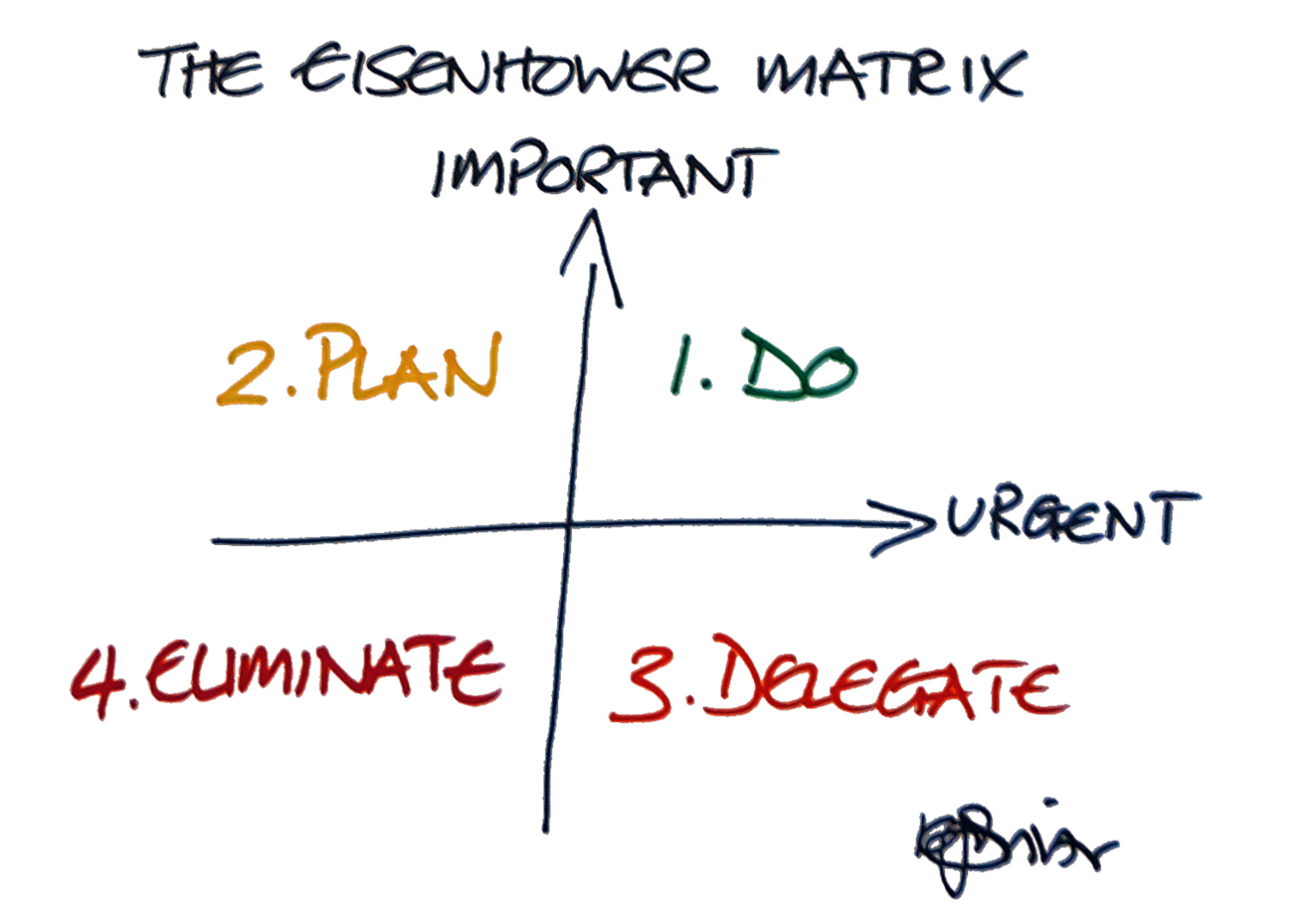
30 May Thinking tools: the Eisenhower Matrix
When you’ve got too much on your to-do list, you can’t think straight. The Eisenhower matrix is a simple thinking tool for establishing a sense of order over all those tasks so you can get the clarity you need to focus on the things that matter.
The matrix emerges from the principle which President Dwight D. Eisenhower reportedly used to organise his priorities, noting “I have two kinds of problems: the urgent and the important. The urgent are not important, and the important are never urgent.”
Here’s how to use it.
- First (if you haven’t already) list the tasks that are on your mind. I find it’s best to do this on paper as you’re less likely to get distracted by notifications
- Then consider which are Important. These are tasks which relate to professional or personal goals which are important to you. The goals may be indistinct or far-off, but nonetheless energise you and relate to things you’d really like to achieve.
- After that, consider which are Urgent. These are likely to be tasks relating to other people’s priorities. They may also link to your own, but not necessarily. They may very well have short deadlines and consequences for not meeting them.
Once you have these two groups in mind, you can start planning and prioritising.
- Do the Important and Urgent tasks first. Everyone clearly has an interest in getting these out of the way! If there are still too many on your list, you’ll need to think hard about which are the most vital and which could be adapted (eg do you have to do the entire task, or only part of it?) or rescheduled.
- Plan Important but less Urgent tasks. If you’re really committed to those long-term goals you’re going to have to make time every week to make progress. Nobody else will be driving you to achieve them. Half an hour a week or a few minutes each day can add up surprisingly quickly. Over time, as you start fulfilling your career and life goals you’ll find you do less of the constant fire-fighting that comes with box 1. I find this quote a useful nudge:
“A year from now, you will wish you had started today” (Karen Lamb)
- Delegate Urgent but less Important tasks. Remember, the reason you’re prioritising is because you’ve got too much on your to-do list. You have to shift some of it elsewhere so you can focus your energy and attention on what matters (the Important stuff). ‘Elsewhere’ could be a colleague, a junior who’d value or benefit from the experience, even upwards delegation is an option. For freelancers or micro-businesses, these are the tasks where it may be worth your while to buy in help.
- Eliminate non-Urgent and non-Important tasks. I’ve deliberately used ‘eliminate’ rather than delete. It’s the difference between deleting the daily round-up email from a website you subscribed to years ago, and clicking unsubscribe so it never arrives again. You want to try and get as many of these tasks off your list permanently as you can, and see how far you can automate or hack the rest.
In my experience, this is a simple thinking tool with a big impact. A lot of my clients use it and tell me they find it helpful. A quick, back-of-the-envelope assessment can restore sufficient control to combat overwhelm and think clearly again. A more thorough look at the start or end of the week can boost the effectiveness of the week ahead. And it’s also handy for gaining the perspective needed for longer-term planning. Give it a go, and let me know what you think!

